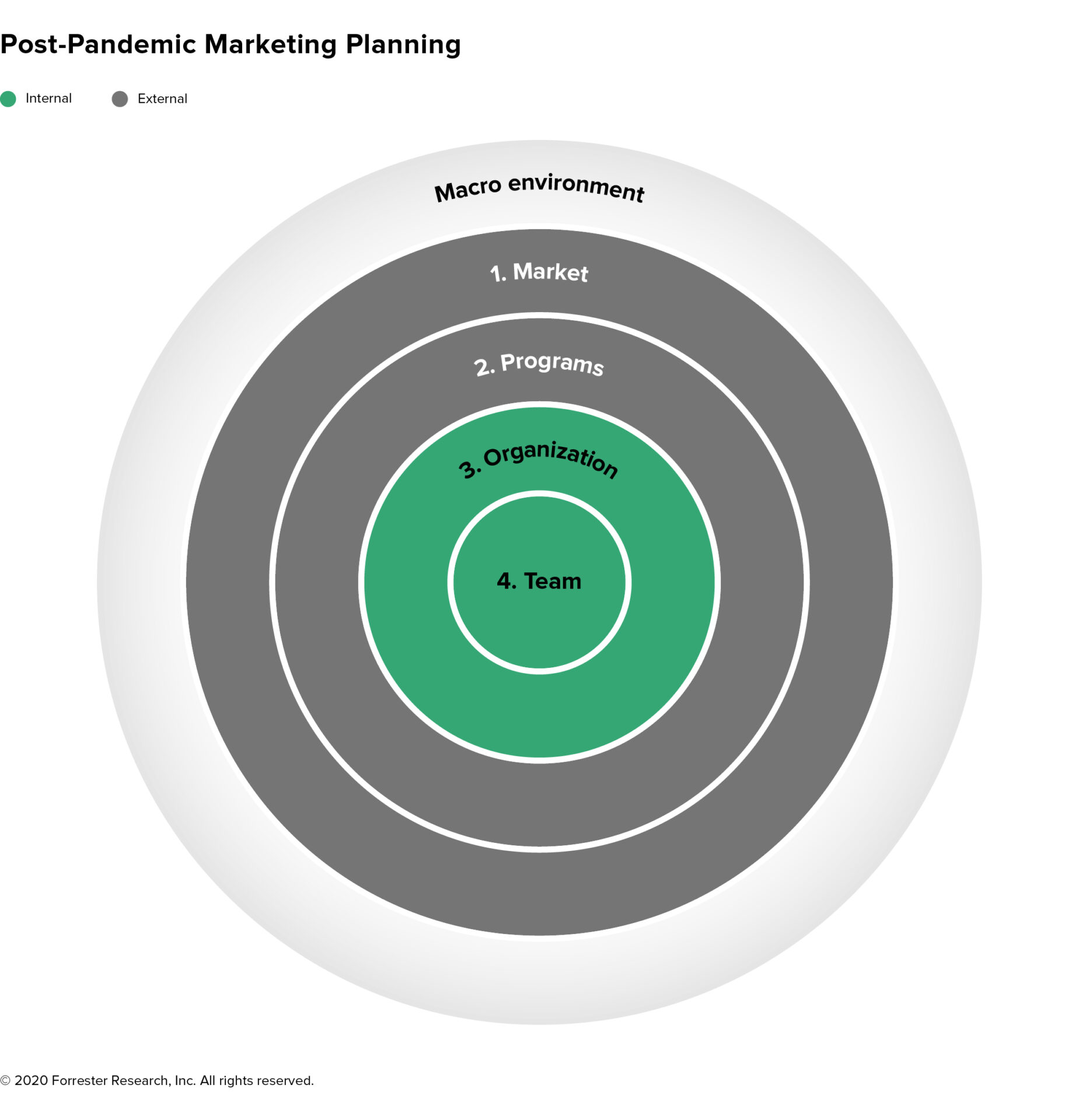Four Questions Marketers Should Be Asking as They Plan for 2021 (Part One)
- As they plan for 2021, marketing leaders need to recognize and capitalize on what’s changed in the post-pandemic world
- Leaders have an opportunity to transform their functions and help rebuild revenue streams
- Planning should start with answering four fundamental questions: what’s changed for your markets, programs, organization, and team
John F. Kennedy once said, “The Chinese use two brush strokes to write the word ‘crisis.’ One brush stroke stands for danger; the other for opportunity. In a crisis, be aware of the danger — but recognize the opportunity.” This is sage advice for marketing leaders as they prepare for 2021. Many countries have passed the peak of the COVID-19 crisis, but organizations are clearly not operating in the same pre-pandemic environment. Leaders need to recognize and capitalize on what’s changed, while also identifying opportunities for more fundamental transformation to help rebuild organizational revenue streams.
In this two-part blog post series, I lay out four questions B2B marketers should ask themselves as they prepare for next year and call out some of the opportunities they have to deliver broader transformational change.
 Question 1: What’s changed in your target markets?
Question 1: What’s changed in your target markets?
Understanding your customers — their needs, challenges, and how their organizations will adapt and change over the coming months — should be the starting point for planning. How has the pandemic impacted them? Forrester has suggested thinking about customers as being in one of three emotional buying states: surviving, adapting, or growing. To determine where your customers fall, consider the customer data you have access to and how you can use it to group target buyers into these three buckets.
With the acceleration in digital marketing triggered by the global lockdowns, marketers have access to more customer data than ever before. Are you seeing more or less interaction from target accounts and sectors? Is intent data highlighting potential new account types for you to target? Have you seen new accounts and/or personas engage with your LinkedIn ads? Talk to your account teams. Ask what they have learned about their target accounts and industries as this year has unfolded.
Just as you have access to more customer digital activity, you also have more competitor data to research and benchmark against. SEO/search engine marketing (SEM) analytics tools can show you how your competitors’ websites have been performing. Are they getting more or less organic and paid traffic on their sites? Are they ranking for any notable keywords? How does your performance compare over the same period? You can also look at their social engagement and identify particularly engaging posts and the impact this may have had on their follower count.
As you analyze this market data, think about what it means for your 2021 plans. Take the time to review your current segmentation model. Are there specific industry segments and accounts that should now move in or out of your demand and ABM programs? Do you need to rethink your positioning and differentiation after looking at competitor activity? Are there programs or tactics you can draw inspiration from?
Question 2: How have your programs been performing?
The last three months have seen some profound changes in how we market and sell to customers as the pandemic has minimized face-to-face contact and turbo-charged digital engagement. The question facing marketers now is what mix of program tactics should be in the plan for 2021? Digital will almost certainly be a bigger part of the future mix, but that raises a number of questions. As more companies focus on digital, how will you stand out? How will you respond to webinar and virtual event fatigue? When and how do you start to incorporate physical events back into the mix?
Start by analyzing the data. What’s worked well over the past three months? How did the virtual event you ran compare with the previous physical iteration? Look at the full range of program metrics to understand how it contributed to reputation, demand and engagement goals and review the overall ROI as it’s likely the cost was significantly less. You may also have made some platform investments that will make future virtual events even more cost effective. Continue to look for innovative ways to engage customers virtually and focus on how you can add emotional resonance to these digital experiences.
Organizations have rightly looked to personalization to drive more relevant and meaningful digital engagement during the pandemic. But has it had the intended impact? Done well, personalization improves prospect conversion rates, but it involves more than the deployment of new technology. Marketers need to consider overarching program design, delivery mechanisms, and measurement, or risk burdening their teams with another piece of underutilized tech. We’ll be looking at the personalization opportunity in more detail in a session titled “AI For Personalization In Europe: Accelerate Adoption by Grasping the Opportunities and Tackling The Challenges” at the upcoming Forrester SiriusDecisions Summit EMEA.
In part two of this series, I’ll look at how changes in your organization and team need to be considered as you start planning for 2021. For a deeper dive into planning in the current environment, sign up for this year’s Forrester SiriusDecisions Summit EMEA, where “Building Resilient Plans Across the Revenue Engine” will be a mainstage session. Learn more about Summit here.
